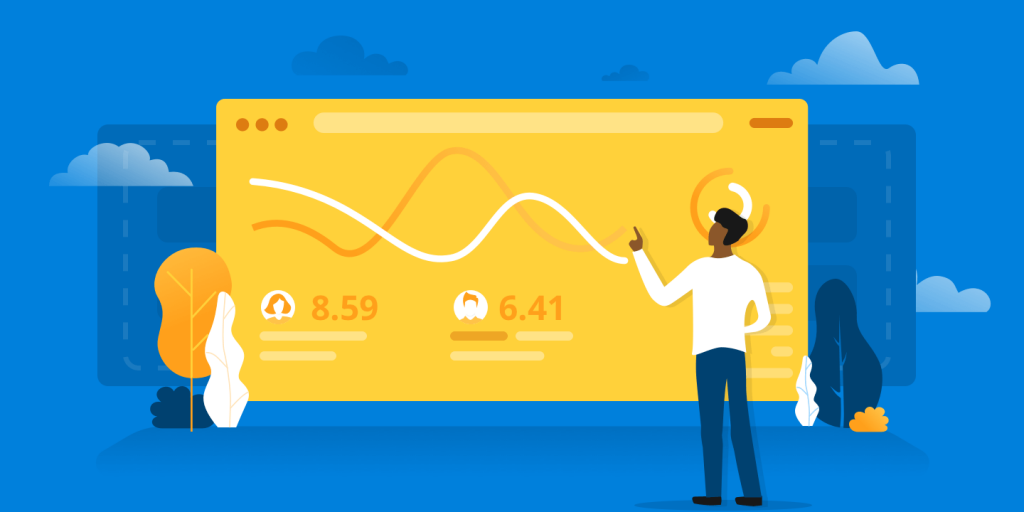Closing the loop with customers requires not only gathering responses but then acting on those insights.
The vast majority of businesses are well aware of the fact that listening to the customer’s voice is an imperative component of growth and improvement. Despite dedicating considerable parts of their budget on systems that collect feedback, companies may find it complicated to put their findings into action.
In this article, we’ve compiled a list of ways you can close the customer feedback loop. This will allow you to understand the demands of your customers better and then efficiently put that into practice, in the most technically sound way. Let’s take a look, shall we?
 What are the benefits of a closed customer feedback loop?
What are the benefits of a closed customer feedback loop?
A loop that lets your business self-improve on a regular basis provides with impressive growth and a better product and/or service quality. Furthermore, any attempt of optimization is no longer a gamble. You’re well aware of the fact that the new feature you’re about to implement to your product will improve your customers experiences with it.
Letting your customers know that you’re implementing optimizations and new features to your product as per their request, will only stimulate their loyalty to the brand.
Technically, a secondary benefit, but which has immense importance from a human resources viewpoint is employee satisfaction.
Due to the fact that when implementing these improvements to a product, teams need to communicate and collaborate very tightly. All this hard work has a single goal — make the customers happier and make it easier for them to achieve their goals.
Knowing that your work serves as a contribution to someone else’s comfort is an essential part of the psychological wellbeing of a modern-day worker.
And last, but by no means least, all these optimizations will only make it easier for your customers to spend more money with you.
 Find your roadmap
Find your roadmap
First off, it’s essential to create a detailed plan on what your customer feedback loop will look like. It should resemble a step-by-step plan that involves your customers in the earlier stages of communication and more of your team in the latter ones.
Similarly, it’s always a good idea to perceive this loop as cyclical, but it mustn’t necessarily move in one direction exclusively.
Approaching this loop should be a continuous process of data collection, analysis, and reflection of the best way to implement these findings, and it is often the case that you may need to go back a few steps to make sure you’ve found the best solution:
Here’s an example of a closed feedback loop:
- Collect data and feedback
- Try to find an immediate solution to issues that can be addressed immediately
- Communicate with your clients on a regular basis to understand the greater picture
- Analyze your customers’ behavior in contrast to their feedback
- Understand where customers are coming from
- Establish multiple channels for communication with your customers
- Find solutions to the customers’ fundamental problems with your service
- Ensure a more holistic approach and involve your entire staff into the decision-making

Act accordingly
You will have to define a set of actions, based on the data you’ve collected from your users. On essential aspect that happens to be misunderstood by some businesses is that they should only tackle negative feedback, while good feedback is just good feedback.
It is imperative that you establish meaningful communication with people that appreciate your service, especially the ones who can be categorized as the proponents of your product or service.
We’ll categorize customers into four essential categories:
- Proponents
- Disengaged
- Detractors
- Non-respondents
All of these can be separated into sub-categories, but we’ll focus on these ones for now.
Be thankful
Closing the customer feedback loop with the people who are your most eager proponents is reasonably simple and constitutes an essential component of a B2C relationship. Here are a few ways you can reward your promoters.
Rewarding your best customers is simple and doesn’t necessarily need to be something more than a “thank you.” Although nobody’s going to get hurt if you get back to them with a small gift in the form of a free month of subscription for news, a discount for online writing services, or whatever seems suitable to your company and form of monetization.
Furthermore, your customers can be remunerated without your immediate participation in the process. A great example is putting a referral system into place.
More importantly, don’t forget to show acts of gratitude to your long-term customers just because, because they’ve been there for quite a while. It is pretty standard that companies will only advertise juicy offers to newcomers, while long-term customers, for some reasons, are left to pay a much larger subscription fee for your service.
Engage
Disengaged users are quite a peculiar segment of any business’s customer base. Despite the fact that they are relatively satisfied users, they aren’t really passionate about it. There’s nothing stopping them from migrating to another service but a single distinctive feat you have to offer, which could be your price range or the spectrum of services you offer.
Furthermore, disengaged users tend to be more complicated to convert into proponents because they tend to leave less feedback on average, compared to the other categories, which infers that you might not be as aware of their pain points with your service.
Engage them by suggesting free or temporary upgrades, so that they can experience the full spectrum of your services.
Detractors
While it may be true that going through negative feedback is an unpleasant experience, investing time and effort in persuading your detractors to give your service a go is an incredibly useful practice. We often mistake criticism personally, which prevents us from understanding that people who aren’t happy with your service or product have one central issue that separates them from being a proponent.
Furthermore, detractors who have had their complaints addressed are very likely to continue doing business with you simply because you’ve shown that their voice matters. And if that’s not a clear sign of the fact that “the customer is always right” and your strategy should be customer-centric, we don’t know what is.
When addressing the issues in your unsatisfied customers have it’s essential to ask the right questions. Find out what would constitute an ideal service of product for them and try offering them a product as close to that as possible.
Non-respondents
This category is known for, well, not responding. Your best chance at doing so is to try your best to engage them, this is why it’s imperative to experiment and be creative. Businesses commonly focus their efforts on re-engaging the members of the first three categories, and rightly so.
However, it’s safe to say that non-respondents are commonly disregarded and do constitute an opportunity for business growth and collecting vital information on what they might be looking for.
 The takeaway
The takeaway
Closing the customer feedback loop is an essential process for any business that is looking to improve customer experience, sales, and customer engagement.
In order to maximize the efficiency of this process, it’s always a good idea to look at your customer base in a more granular fashion — by separating your customers based on the feedback they provide you with. Good luck with that!






